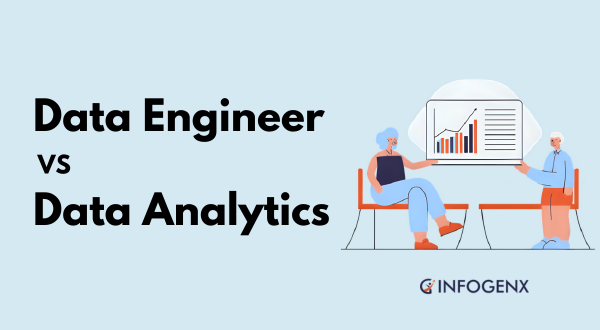
Today, understanding the difference between data engineering and data analysis is critical for building a sustainable and intelligent organization that can grow. Although often confused as synonymous, data engineering and data analysis serve different, but equally important, purposes in how modern organizations use data.
When starting, both for existing organizations and those with no data analytics, understanding how engineering leads to analysis is a powerful first step in demonstrating data maturity.
If you don't know where to start, click here for a free consultation on your current data setup and what you can do to grow.
Data Engineering vs Data Analytics
| Function | Data Engineering | Data Analytics |
| Purpose | Build infrastructure to collect, clean, and store data | Analyze and interpret data to support decisions |
| Tools | Apache Spark, Airflow, Snowflake, dbt | Power BI, Tableau, Python, SQL |
| Output | Data pipelines, data warehouses, ETL frameworks | Dashboards, insights, reports, forecasting |
| Users | Data engineers, architects | Analysts, data scientists, business teams |
What Is Data Engineering?
Data engineering focuses on developing systems that collect, transform, and store data across the organization. This includes building pipelines, managing ETL processes, and ensuring data accuracy and scalability.
By automating how data is processed and delivered, data engineers empower analytics teams to move faster and with more confidence. Learn more about our end-to-end data capabilities on our data engineering and analytics services page.
What Is Data Analytics?
Data analytics is the process of examining data and turning it into value for a business. This includes discovering trends, forecasting outcomes, and supporting decisions through reports, dashboards, and statistical models.
Analytics helps businesses understand what is working, what isn’t, and where to improve. But it all depends on clean, accessible data.
The Relationship Between Data Engineering and Data Analytics
Strong analytics cannot exist without strong data engineering. A data engineer's role is to deliver structured, reliable data that analytics teams can use effectively.
These two roles together create a pipeline-to-insight workflow essential for informed decision-making.
When aligned properly, data engineers and analysts become a powerful force for performance, growth, and innovation.
Tools in the Modern Data Stack
| Layer | Tools | Purpose |
| Ingestion | Fivetran, Kafka | Pull data from sources |
| Storage | Amazon S3, BigQuery | Store structured and raw data |
| Transformation | dbt, Apache Beam | Clean and reformat data |
| Orchestration | Airflow, Prefect | Manage data workflows |
| Analytics | Looker, Tableau, Power BI | Visualize and interpret data |
Choosing the right tools and aligning engineering with business goals unlocks the full potential of your data.
Final Thoughts
Your team may see dashboards and insights powered by analytics, but behind the scenes, it’s data engineering that makes it possible. To be truly data-driven, invest in both disciplines for today's needs and tomorrow’s agility.
Build reliable pipelines. Choose scalable platforms. Foster communication between engineers and analysts.
Need help evaluating your current data setup? Click here for a free consultation to assess your data architecture and turn raw data into real results.
Thank you! You have subscribed to our newsletter.
